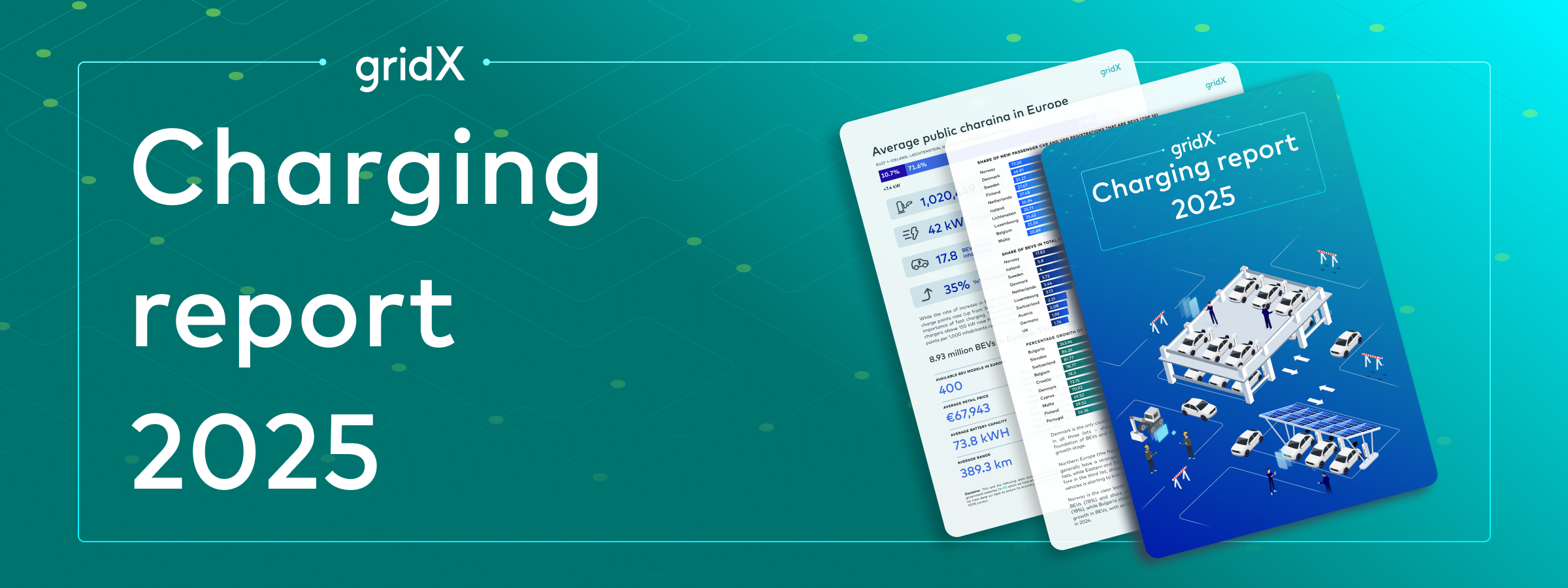
Munich, 14 April 2025 – The European electric vehicle (EV) landscape continues to evolve, with an increasing number of battery electric vehicle (BEV) models and a growing focus on fast charging infrastructure. gridX’s latest EV Charging Report 2025, which was published today, again shares an overview of the latest developments in Europe’s EV charging landscape. The report highlights the Netherlands as a frontrunner in public charging infrastructure, while also shedding light on key trends across Europe. For the first time, gridX also includes an original survey amongst 200 German EV drivers in order to gain insights into specific trends, preferences and benefits in their EV driving routines.
Growing diversity in the EV market
Europe saw a 69 percent year-on-year increase in BEVs in 2024 and the number of BEVs per 1,000 inhabitants increased from 16.5 in 2023 to 17.8. Norway continues to lead in BEV adoption, with 148 BEVs per 1,000 inhabitants, followed by Iceland (80) and Denmark (60). The Netherlands ranks sixth, with 33 BEVs per 1,000 inhabitants, surpassing Germany, which sits in the middle of the pack with 24 BEVs per 1,000 inhabitants.
Despite strong overall growth, regional disparities remain. Bulgaria recorded the highest BEV growth rate in 2024 (244 percent), followed by Slovakia (86 percent) and Switzerland (82 percent), illustrating that Eastern Europe is entering a high-growth phase, while Northern and Central Europe are beginning to plateau.
The Netherlands: a leader in charging infrastructure
The Netherlands stands out as Europe’s leader in charging infrastructure, with 10.04 charge points per 1,000 inhabitants – the highest ratio in Europe. Belgium (6.54) and Iceland (6.48) follow, while Germany, despite its large market, has just 1.89 charge points per 1,000 inhabitants. The Netherlands also leads in the number of charge points per kilometer of highway, with 66, making it the most accessible country for EV charging, according to gridX’s analysis.
When looking at absolute numbers, Germany installed the most new chargers in 2024 (39,436), including 12,566 direct current (DC) fast chargers. However, the Netherlands remains the country with the highest total number of installed charge points (183,000), ahead of Germany (159,958) and France (155,931). In terms of overall charging capacity, Germany takes the lead with 6 gigawatts (GW), while Norway tops the list for capacity per 1,000 inhabitants (431 kW).
Fast charging continues its rise
The demand for high-speed charging continues to grow, with the share of chargers above 150 kW increasing from 7.2 percent in 2023 to 9.8 percent in 2024. The number of alternating current (AC) chargers grew by 33 percent, while DC fast chargers increased by 63 percent. In fact, the growth in DC chargers outpaced the growth in AC chargers in every country except for Croatia and Latvia. Norway has the highest share of ultra-fast chargers over 150 kW (27 percent), followed by Finland, Estonia, and Liechtenstein (each at 20 percent). Some of the most rapid growth in DC chargers was observed in Malta (400 percent increase), Lithuania (352 percent), and Greece (308 percent).
The road ahead
As EV adoption accelerates across Europe, the expansion of reliable and efficient charging infrastructure remains crucial. The Netherlands' advanced charging network serves as a benchmark for other countries striving to support the shift to electric mobility. gridX’s new EV Charging Report 2025 thereby underscores the importance of continued investment in charging solutions to accommodate the growing number of EVs on European roads.
Premiere: gridX shares exclusive insights from its own EV driver survey
For the first time, gridX includes insights gained from an original survey amongst 200 German EV drivers in the new edition of its EV Charging Report. One of the key results: 40 percent of all respondents feel they have significantly reduced their fuel and energy costs since switching to an EV, while 38 percent feel good about reducing their environmental footprint. When charging at public charging stations on longer trips, 70 percent of respondents plan their charging stops in advance and 56 percent choose fast charging stations based on the price per kilowatt, showing that convenience and cost are decisive factors. Charging at home, however, remains the preferred choice: on average, 53 percent of charging sessions take place at home, 15 percent at work, and 32 percent using public infrastructure. The survey also highlights that EV drivers who also own a photovoltaic (PV) system are much more likely to own additional assets and intelligently manage their energy. For example, compared to respondents with an EV only, those owning an EV and PV system are 3.4 times more likely to own a home battery, 1.7 times more likely to use an app to control energy flows and 1.3 times more likely to also own a wallbox or use tariffs with variable prices. This highlights that solar PV is the entry point to a smart connected household, and it is crucial for automotive and charge point manufacturers to make their hardware compatible with other household energy assets. Of the respondents with both an EV and PV system, 34 percent charge their EV almost exclusively with locally-generated solar power, showing that homeowners want to lower their costs and become more sustainable, without having to sacrifice mobility needs.
Read more or download our report here.
gridX is Europe's leading smart energy company based in Aachen and Munich. With its modular EMS XENON, gridX enables manufacturer-independent optimization and management of distributed energy resources. With XENON, partners can build, scale and adapt energy management solutions faster and more efficiently than ever before, always meeting evolving market demands. E-mobility partners can install more and higher power charge points at sites without the need for costly grid extensions. Partners in home energy management minimize costs and complexity by offering end customers holistic smart energy management built for the future.